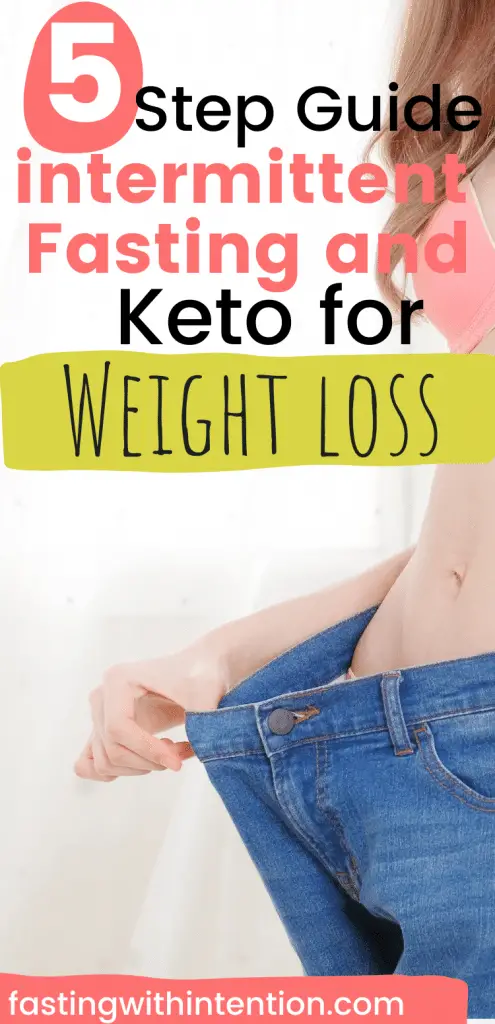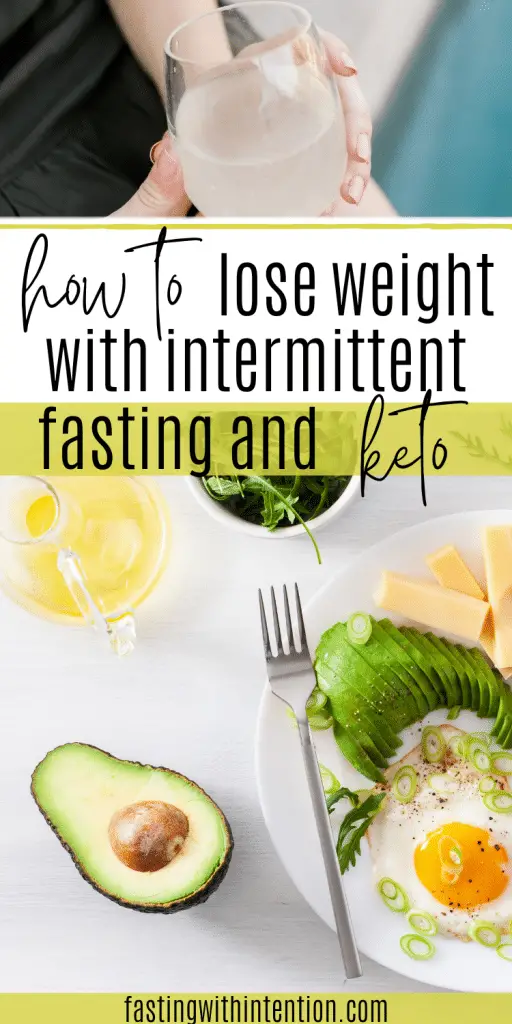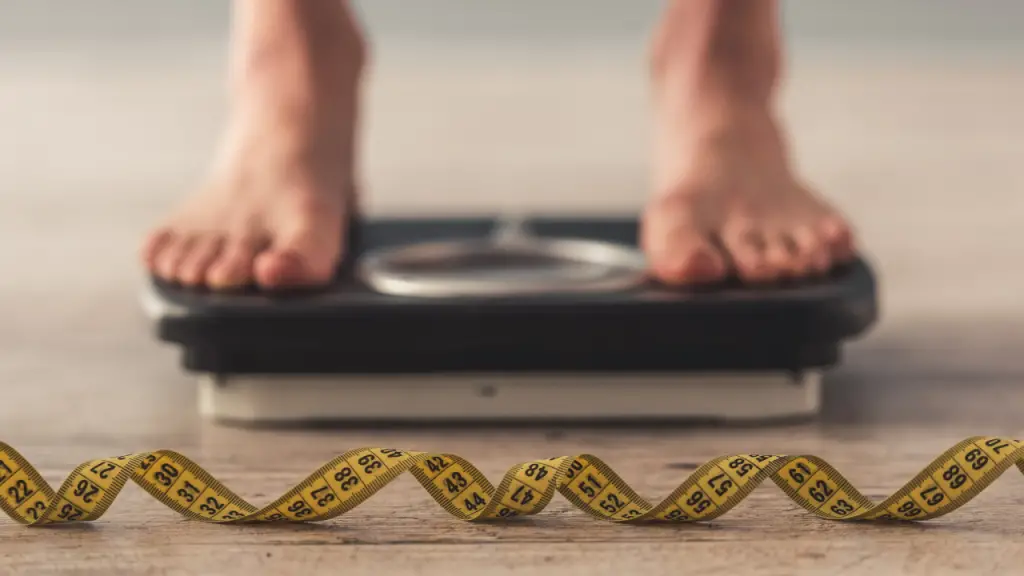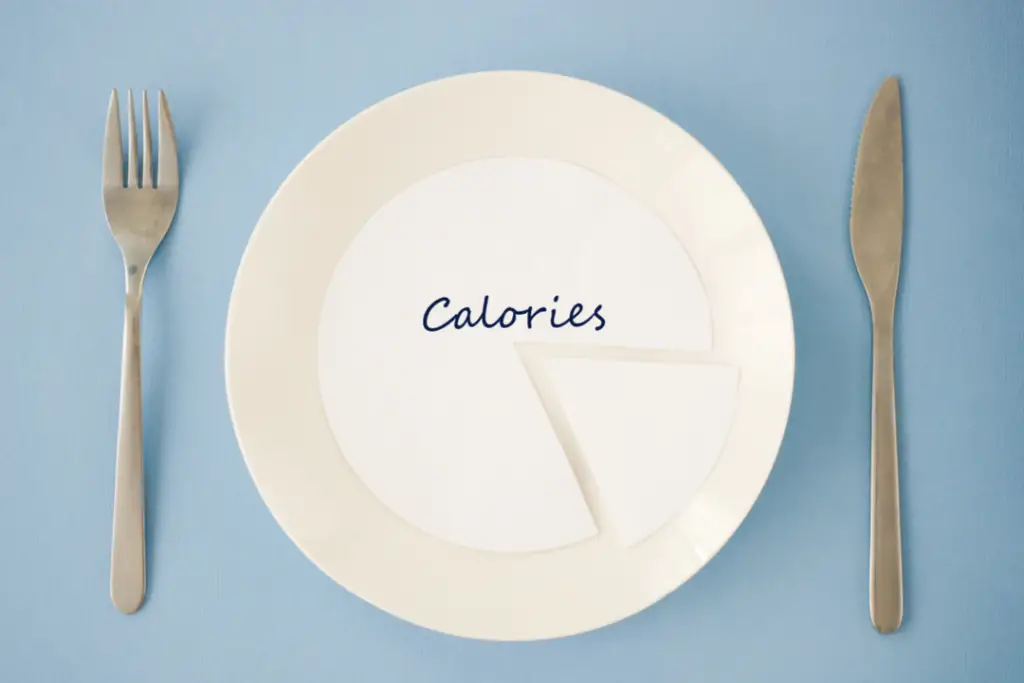Well, I thought I was done writing about intermittent fasting with keto, or at least, for a little while. And then, one of my readers sent me a message because she wanted some advice on implementing OMAD and the keto diet. I figured writing a step-by-step guide post would be helpful, so here we go.
Step 1: Set Your Goal
Whenever you want to lose weight, it’s helpful to decide ahead of time how much weight you want to lose and how fast. It will help you pick the right intermittent fasting method, make sure you have realistic expectations, and reevaluate your progress down the road. Intermittent fasting with keto makes losing weight easier for many women, but the process remains similar.
How to Pick Your Goal Weight
We often talk about how your weight in pounds is not the only helpful measurement. For example, taking note of your waist and hips measurements are also useful. Moreover, I recommend you take a before picture of yourself because many women will see their faces slimming down before the readings on the scale start improving. That being said, it makes sense to pick a goal weight.
Setting a Realistic Goal Weight
Ask yourself these questions:
- Was there a time in your life when you felt most confident and healthiest? What weight were you at you then?
- How long ago was it? If it was, say, more than 20 years ago and before having babies, is it still a reasonable goal?
- Can you envision yourself feeling healthy and confident at a different weight? If so, start with the easier, more achievable weight as a goal. If things are going well, you can always keep up with the same strategies and keep losing weight.
If you have never been at a weight that feels good for you, you can use a BMI target to start. Use a BMI calculator and pick a weight that will put you in a healthy BMI range. Again, you will have the opportunity to reevaluate your goal as you go. Nothing is ever set in stone.
Decide on a Timeframe
Now that you have set a specific goal weight, you need to decide on a timeframe. When using intermittent fasting with keto for weight loss, it’s essential to set a goal that is specific, attainable, and measurable. IT helps you stay focused and stay on track. Just like your goal weight, your timeframe needs to be attainable. Setting an unrealistic goal is unsafe, unsustainable, and demoralizing. I recommend you don’t strive to lose more than 5 pounds a month. If you are relatively close to goal weight (less than 20 pounds), it will take longer to lose weight, be gentle with yourself. Losing 1pound a week requires a calorie deficit of 3,500 calories! That’s harder than you think! Even though we don’t focus on calories as much when losing weight on intermittent fasting with keto, calories still matter.
As a guideline, if you would like to lose 20 lbs, I suggest you give yourself a year. Yes, a year! There will be ups and downs, some months you may lose no weight at all, some months, you may lose 5 lbs. I always recommend you set a timeframe that gives you space to breathe, reevaluate and achievable without drastic changes.
Watch my Intermittent Fasting 101 Workshop if you want to learn more about the exact step-by-step process I used to lose 20 lbs after the age of 40.
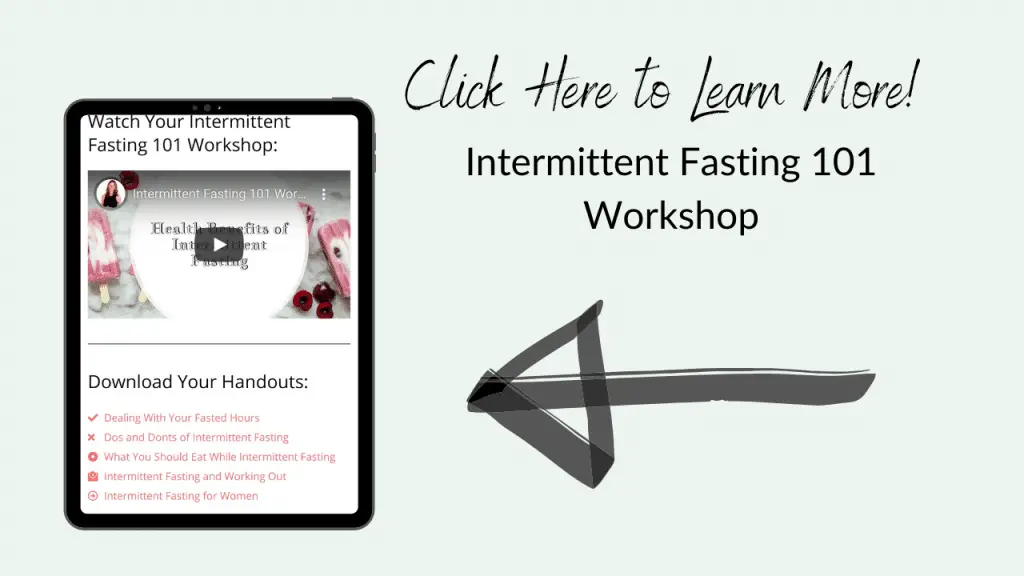
Step 2: Choose an Intermittent Fasting Method
Picking an intermittent fasting method when you are also doing the keto diet is a bit different than when you are not doing the keto diet. Why? Because the keto diet mimics fasting. Since it mimics fasting by including a very minimal number of carbs, you don’t need to fast as long to get similar results. I achieved most of my weight loss through intermittent fasting without keto, but to achieve my goals, I would have to fast around 20 hours each day (not just to lose weight, but to feel great and lose the cravings). Read my Warrior Diet Results if you are curious.
However, when I started experimenting with the keto diet in addition to intermittent fasting, I noticed that I was still feeling great and losing weight (even though I was technically at my goal weight) even though I was fasting fewer hours (around 14-16 hours). What I would recommend is that you start with a longer eating window if you are doing the keto diet. Another great option would be to eat 3 meals a day (no skipping breakfast), but fast completely for 24 hours twice a week (it’s called the eat stop eat method). Pick the method that you think you will enjoy most, you will get a chance to reevaluate, don’t worry! It’s not a once-in-a-lifetime decision! Just go ahead and pick one!
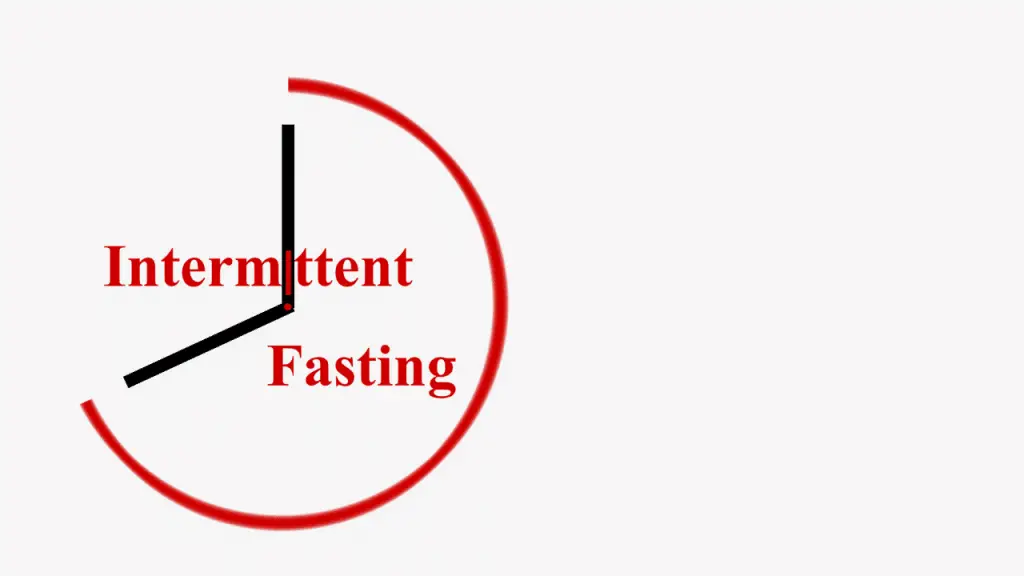
Step 3: Decide What to Eat While Intermittent Fasting With Keto
It will make your life a lot easier if you pick a simple and repeatable meal plan. Eat the same thing every day if that’s what it takes! My favorite option is a 7-day meal plan that I rotate through, but whatever works for you is perfect! Just keep in mind to use more fats when you get started, to check the calorie/carb ratio of your recipes, and to focus on nutrient-dense foods.
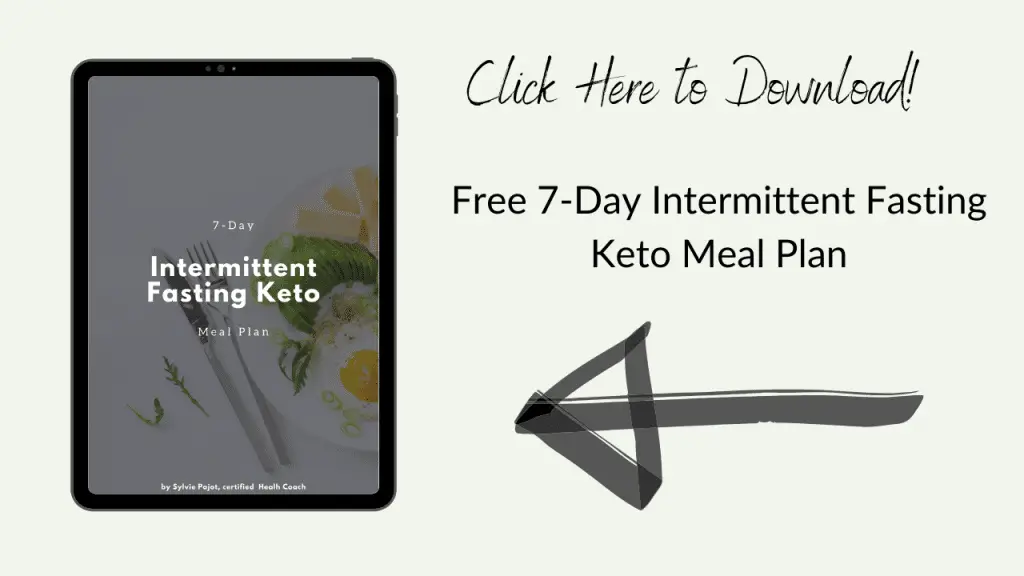
Consume Plenty of Healthy Fats
When you are just getting started with intermittent fasting and the keto diet, make sure you double up on healthy fats. Don’t worry about calories! For at least two weeks, add more olive oil or coconut oil to your recipes. Eat more avocadoes, chia seeds, ghee, sardines, hemp hearts, and olives! It will make the transition smoother by lessening the stress caused by a change in diet.
Check Your Calorie/Carb Ratio
As I mentioned, I don’t want you to worry about calories at first. I will recommend you check your calorie intake on Step 5 if needed. I want you to eat plenty of nutrient-dense foods. The issue is, as you browse recipes online, you will find that one serving of most keto recipes is deficient in calories. As you plan your meals, make sure you take this fact into consideration. My 21 Simple Keto Family Dinners is a good starting point to solve the issue.
Focus on Nutrient-Dense Foods
No need to make fat bombs, keto breads, and keto desserts. In fact, I recommend you avoid those as much as possible. Instead, fill up on nutrient-dense foods that will heal your body. I would even suggest that you go easy on nuts and seeds, which are often the new addiction for those who go keto. Fill up on meat, fatty fish, vegetables, and healthy fats like oils, mayonnaise, olives, and avocado.
Less Dairy
I find dairy products really helpful to combat carb cravings when keto, but be careful: many people are dairy sensitive without realizing it and modern pasteurized dairy from animals raised in feedlots is not the nutrient-dense food it used to be. Favor organic goat dairy and go easy on it!

Step 4: Commit
Now, that’s the hard part! Commit! Some people can jump into a new diet and never look back, but not the average person, and certainly not me! Chances are you will have moments of weakness, but as long as you get back on track as quickly as possible, your progress is not lost.
Make Your Decisions Ahead of Time
The best way to increase your chance of success is to make most of your decisions ahead of time. Decide what you will be eating at each meal, how often and how much. Plan snack ideas for when you are hungrier. Make sure you have all your food options are as conveniently prepared as possible. Avoid keeping foods that tempt you in the house if at all possible.
Step 5: Reevaluate
After your first month doing intermittent fasting and keto, it’s time to gauge your progress. Are you losing weight? Is your weight loss on track according to the timeframe you gave yourself?
If You Are Not Losing Weight
A weight loss of only 2 lbs each month is a decent weight loss in my opinion. It may not be up to your expectations, but that’s how I slowly but surely managed to lose 20 lbs after 40 and keep it off. It’s time we stop making crazy claims like “lose 10 lbs in 2 weeks”. Sustainable weight loss takes time. Now, if you have not lost any weight after a month of intermittent fasting with keto, I have a few suggestions: check your calories, change up your intermittent fasting method, increase your level of activity, improve your sleep, and decrease your stress.
Check Your Calories
I mentioned that I didn’t want you to count calories during that first month. You don’t need to added stress and many women experience weight loss without counting calories with intermittent fasting and the keto diet. If after a month, you haven’t loss ANY weight, you may consider tracking your calories for about a week. It takes a calorie deficit of 500 calories a day to lose one pound a week. You may discover that you are eating too many good fats and good foods!
Change Up Your Intermittent Fasting Method
Depending on whether you were fasting daily or using a method like the eat stop eat method, it may be beneficial to try something else at this point. Either extend your fasting window or go for a different intermittent fasting method altogether. Many women experience exciting results using Alternate Day Fasting, OMAD or 2MAD, or the Warrior Diet. You may have to experiment a little to find what works for you.
Increase Your Level of Activity
High-Intensity Interval Training (HIIT) and strength training are your best options to improve your overall health and lose weight. They both boost your metabolism and improve pretty much every aspect of your health (like reducing your blood pressure and improving insulin resistance).
Improve Your Sleep
A lack of sleep will increase your food cravings and make it more difficult to lose weight. If you have trouble sleeping, you may need to decrease caffeine consumption, screen time, and find some self-care practices to help you relax. Women in perimenopause and menopause commonly struggle with sleep issues. I found tart cherry concentrate to be extremely beneficial as far as staying asleep goes. On top of helping me sleep soundly all night, it is filled with antioxidants, which help boost your immune system and neutralize free radicals (free radicals contribute to aging and cancer).

Reduce Stress
Besides affecting your sleep, stress will also make it harder to lose weight. An increase in cortisol helps burn fat, but too much of an increase makes you gain weight. it’s a matter of balance. Your body needs stress to learn to overcome stress and stay healthy, but too much of it is counterproductive. I am sure you know all the typical recommendations to reduce stress like prayer or meditation, exercise, better sleep, better nutrition, etc. I am just going to add that sometimes, changing your lifestyle is stressful. Doing intermittent fasting with keto can be stressful. You can try taking a step back by removing one of the two or extending your eating window. Another idea is to make sure you don’t’ feel too deprived. If you are feeling deprived and unhappy about your new lifestyle, find ways to reward yourself, and to feel like the experience is enjoyable.
Intermittent Fasting With Keto: Step-By-Step Guide Video
In Summary
If you follow this simple step-by-step guide, your intermittent fasting with keto experience should be pretty straightforward: set your goal, choose your intermittent fasting method, decide what to eat ahead of time, commit and reevaluate as needed. Remember, you are in charge of your own health and well being, finding what works for you is a process that will require you to experiment and pay attention. Keep in mind that some women don’t do well on the keto diet. Also, if you do keto to lose weight but stop completely once you reach your goal weight, you will most likely gain the weight back. Be cautious and take your time.
